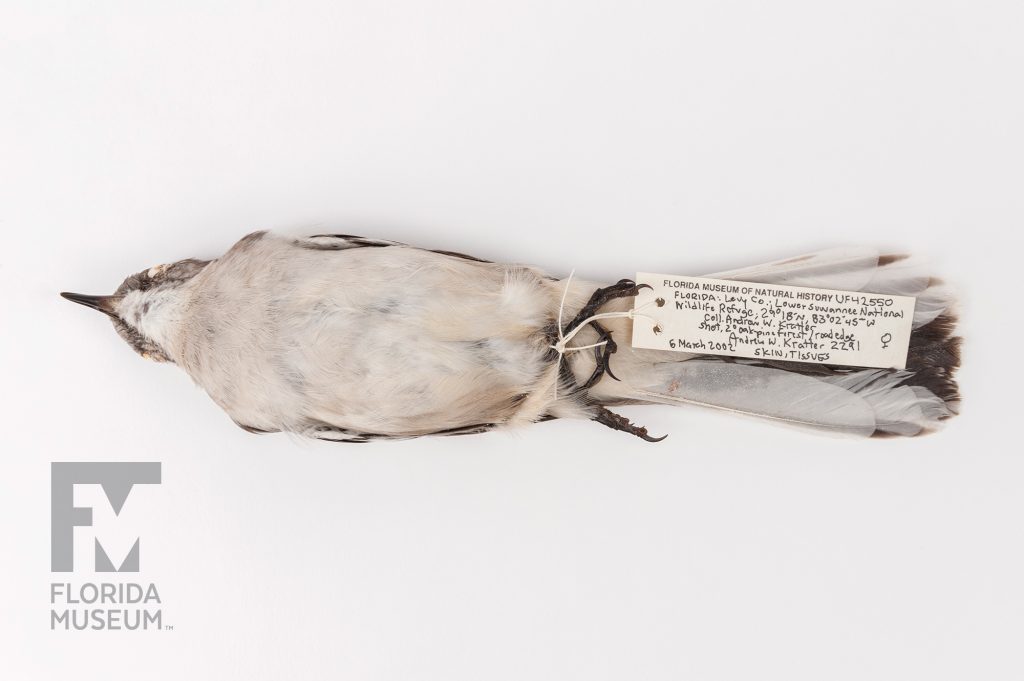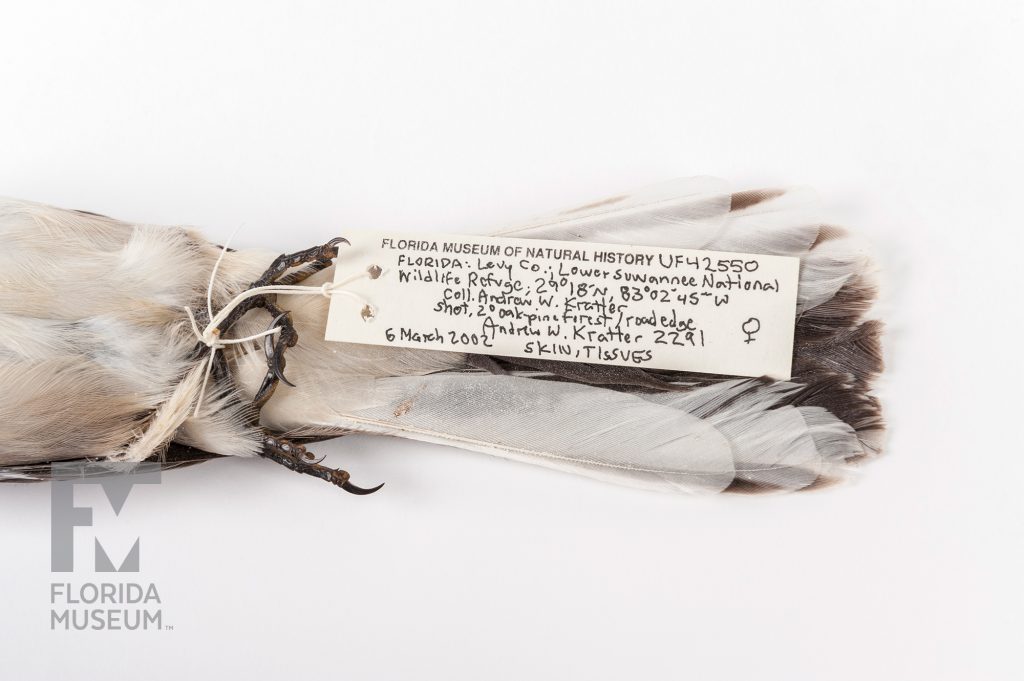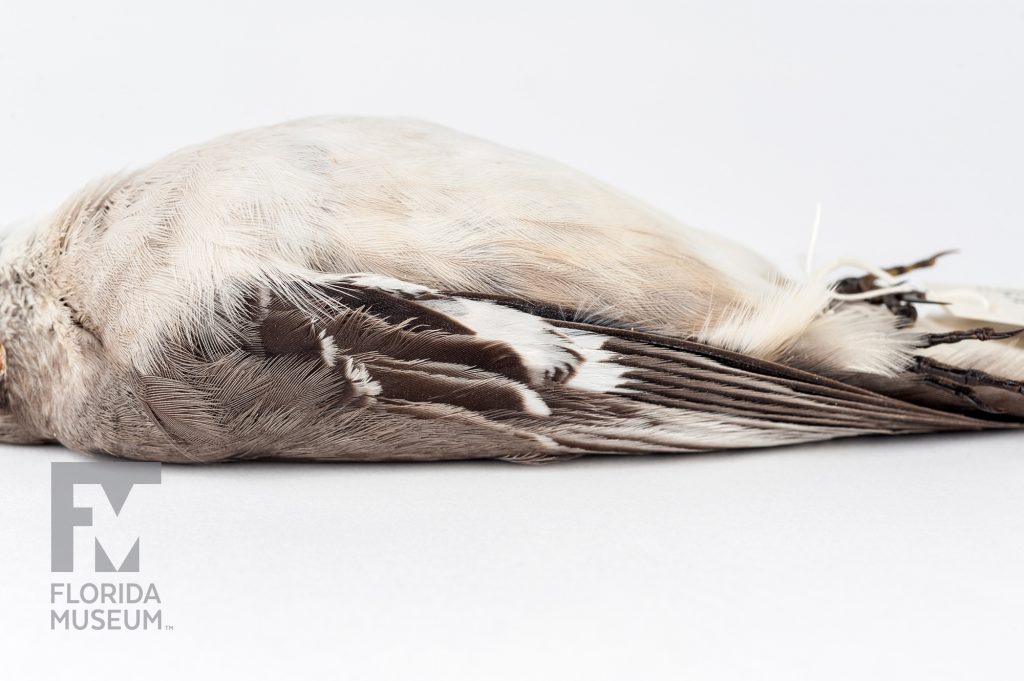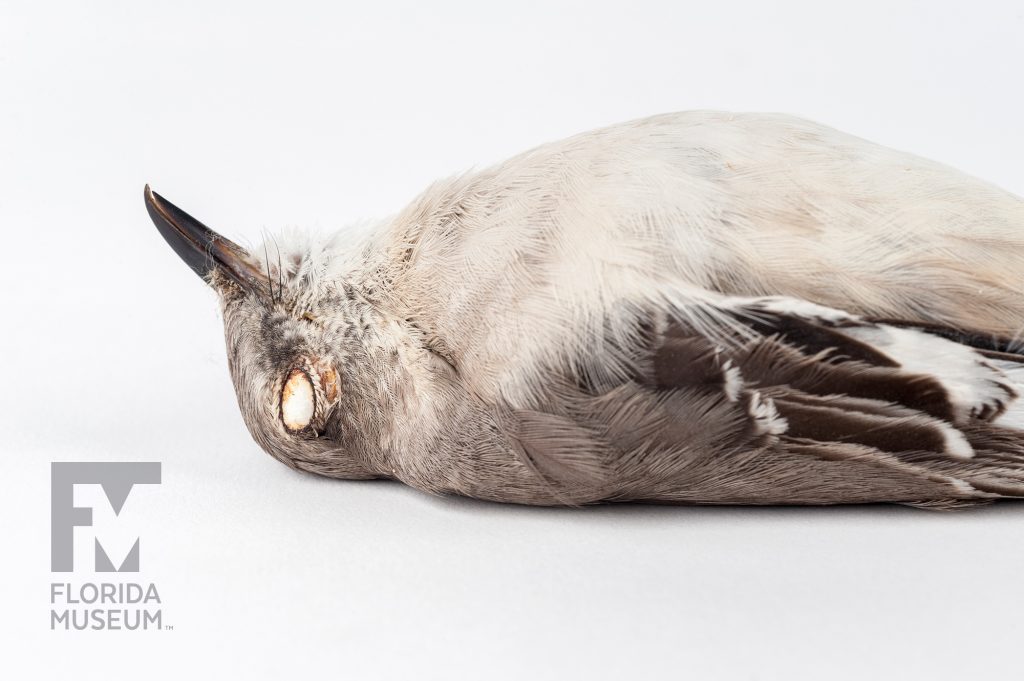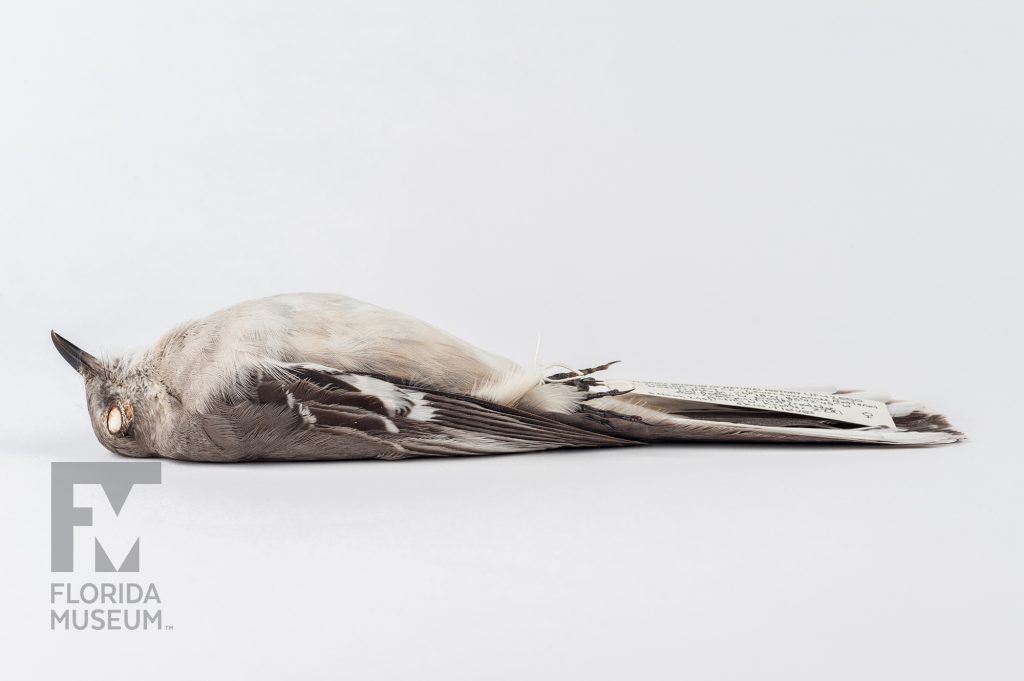Northern Mockingbirds live throughout the U.S. in both urban and rural environments. UF researchers recently discovered that these highly intelligent birds remember people who have threatened them in the past, and will attack if they see the same person again.
Summary
Northern Mockingbird (Mimus polyglottos)
From Levy Co., Florida, Mar. 2002
Florida State Bird
Collection
Story
The Northern Mockingbird is one of the most iconic birds of the South. It is probably the bird that people see the most as they travel around in their everyday lives. It’s also the state bird of five states, one which is Florida.
It’s most famous of course because it’s a very vocal bird. They imitate the songs of at least 50 or 60 other species of Southern birds and they even mimic car horns and car alarms. But probably the reason why we see them most often is that they’re extremely aggressive. They attack almost anything they view as a threat including cats, including crows, hawks and even people. In fact, they really seem to take a particular dislike to some people; they attack them over and over again and seemingly ignore other people.
When we saw this we became curious about why it is they seem to really only dislike a certain number of us. So we decided to do an experiment when we were studying the Mockingbird nesting behavior. We divided up our students into two groups: one of whom would stand next to the nest and not touch it; and another group would stand next to the nest but actually touch the nest. We found that after a single trial the Mockingbird learned which humans were a threat and which ones weren’t, and they would start attacking the ones that touched the nest and they would ignore the ones that didn’t. They did this over and over again, and the more the students did this the stronger their reaction became, until eventually we found that they could even pick out the people who had touched the nest from a crowd of a hundred people. And they would ignore everyone else, go right for the person who had touched their nest, and it didn’t matter what clothes they were wearing, how they were wearing their hair, whether they were wearing a hat; they were obviously learning to recognize the face of these people.
We of course took this as one more line of evidence that birds are way, way more intelligent than we think. They have very small brains but those brains are really powerful, especially in things like this that really help them because these birds face a lot of predators. We think one of the reasons why they’re so common, they’re so successful, they do so well in urban environments, is they can learn very exactly who is a threat and who isn’t, even within predators. And in fact, this is one of the reasons why we think that being called a birdbrain is not an insult at all.
Scott Robinson
Katharine Ordway Professor of Ecosystem Conservation*
Florida Museum of Natural History
Additional Information
The Northern Mockingbird (Mimus polyglottos) is Florida’s State Bird
Listen: Florida Bird Sounds
Exhibit
On display Sept. 23, 2017-Jan. 7, 2018, Rare, Beautiful & Fascinating: 100 Years @FloridaMuseum celebrated the Museum’s rich history. Each Museum collection was asked to contribute its most interesting items and share the stories that make them special. Though the physical exhibit is closed, this companion website remains online, providing an opportunity to experience the Florida Museum’s most treasured specimens.
Exhibit Area: 100 Years of History
Theme: Sunshine State Symbols
 Want to see more? Explore more than 300 breathtaking color photos of plants, animals, fossils and cultural heritage materials from the Florida Museum of Natural History’s collections in the award-winning book All Things Beautiful available from the University Press of Florida.
Want to see more? Explore more than 300 breathtaking color photos of plants, animals, fossils and cultural heritage materials from the Florida Museum of Natural History’s collections in the award-winning book All Things Beautiful available from the University Press of Florida.
*This title was accurate at the time the exhibit was on display in 2017. Please visit the lab website to verify current staff and student information.
